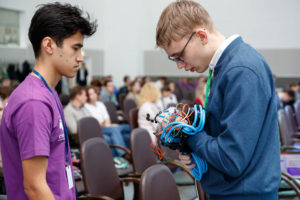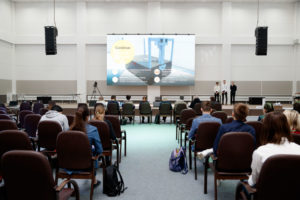Lyceum, university, innovator
Since 2011, the «Phystech-Lyceum» have been implementing the Lyceum-University-Innovator program. This program is an adaptation of the «Phystech system» to school education. During the last three years of study, high school students form groups of three students who work on a research project. To organize this work, the school has created five laboratories working in five priority areas of knowledge:
- living systems;
- information technology;
- space research;
- nuclear research;
- high-efficiency energy.

These laboratories and the work of the project groups are supervised by senior students of MIPT; each such laboratory has a basic department at MIPT and a scientific supervisor from among the scientists and teachers of the university. This allows schoolchildren to use the MIPT laboratory base for their experiments, get a taste of university life, and gain experience in communicating with students and teachers. In addition, each area has a partner corporation, one of the industry leaders (Himrar Higher Technology Center for Living Systems, Yandex for information technology, etc.). Their participation provides an opportunity to see how scientific research finds practical application in life. Thanks to this program, schoolchildren at an early age acquire the skills necessary for success in the modern world. They learn to work in a team, learn to work on a long-term project in conditions as close to real as possible, and master complex network interactions. After all, the project group is scattered across three organizations and consists of three schoolchildren, a student supervisor, a specialized school teacher, an MIPT teacher, and a curator from a partner company.

Thanks to this, students in the process of working on the project have the opportunity not only to acquire new knowledge and perform research at a high, «university» level, but also to begin to master the skill of working in a modern, complexly organized team, to acquire the first connections in an innovative environment, which can then be developed further, at the university and after its completion. The results of this work of the group are reported at an annual conference and a final article at the end of the three-year project, which may well become their first scientific publication.




